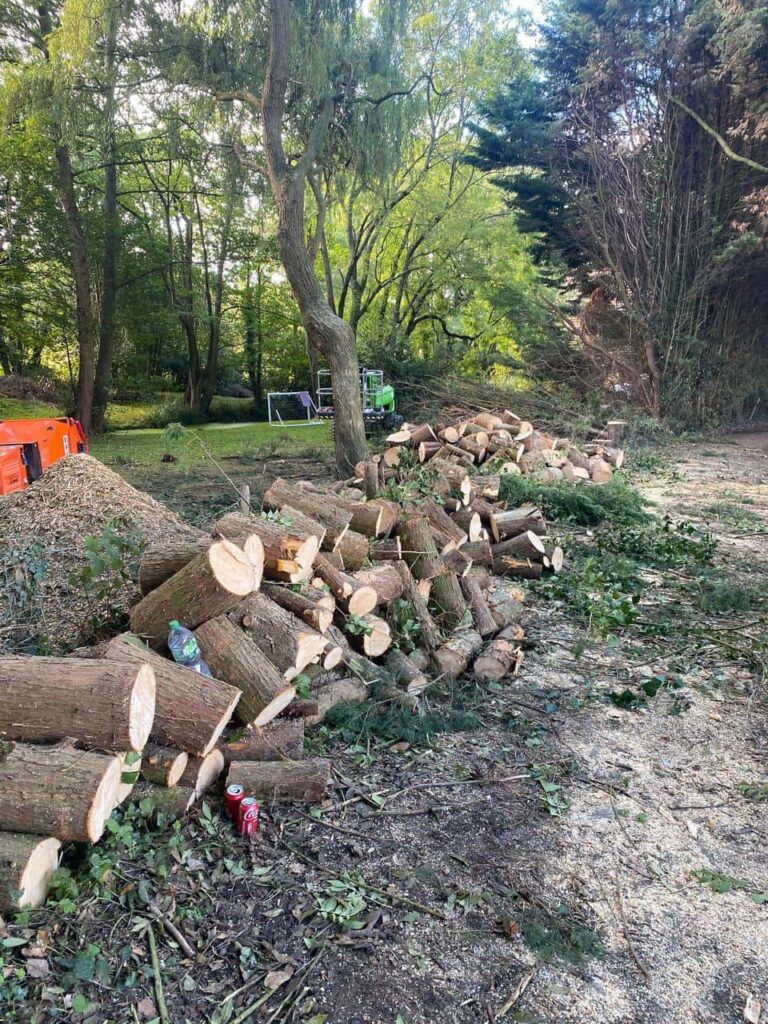Introduction: Dead wood removal is a critical aspect of tree care that enhances safety and contributes to the health and longevity of trees. However, in urban and suburban environments, dead wood must be removed with care and adherence to local regulations and guidelines. In this blog post, presented by Ipswich Tree Surgeons, we’ll explore the importance of complying with local regulations regarding dead wood removal and provide insights into how tree care professionals ensure safety and legal compliance.
Understanding the Role of Local Regulations
Local regulations governing tree care and dead wood removal are typically in place to achieve several essential objectives:
Safety: Regulations aim to minimise the risk of falling branches and limbs, which can pose a significant safety hazard to people, property, and vehicles in urban areas.
Environmental Protection: Regulations often include provisions to protect specific tree species, particularly those that are native or ecologically valuable.
Aesthetic Preservation: Urban landscapes often rely on trees for their aesthetic appeal. Regulations may guide tree care activities to ensure that the area’s visual character is maintained.
Conservation: Some regulations focus on preserving rare or endangered tree species to support local biodiversity.
Compliance with Local Regulations
Ensuring compliance with local regulations during dead wood removal involves several key steps:
Knowledge of Local Laws: Arborists and tree care professionals must be familiar with the specific regulations in their area. This knowledge helps them tailor their services to meet local requirements.
Obtaining Necessary Permits: Depending on the locality and the scope of work, permits may be required for certain tree care activities. Arborists assist property owners in obtaining the necessary permits to ensure the work is legal.
Species Identification: Tree care professionals must accurately identify tree species, especially if local regulations protect specific types of trees.
Assessment and Documentation: Arborists thoroughly assess the tree’s health and the extent of dead wood to be removed. Documentation of these assessments is essential for compliance and record-keeping.
Selective Pruning: When removing dead wood, arborists use selective pruning techniques to minimise the impact on the tree’s structure and health while complying with local regulations.
Disposal Methods: Local regulations may dictate how removed dead wood should be disposed of, whether through recycling, mulching, or other approved methods.
Public Notification: In some cases, notifying neighbours or the local community about tree care activities may be required by regulations to ensure transparency and address concerns.
The Benefits of Compliance
Complying with local regulations when it comes to dead wood removal offers numerous benefits:
Safety: Compliance helps prevent accidents and injuries related to falling branches and limbs.
Environmental Responsibility: It contributes to the preservation of ecologically valuable trees and the conservation of native species.
Legal Protection: Property owners and tree care professionals avoid legal complications and penalties by adhering to local regulations.
Community Relations: Demonstrating responsible tree care practices fosters positive relationships with the local community.
Conclusion: Dead wood removal is vital to tree care in urban and suburban environments. Ensuring compliance with local regulations is equally crucial, as it helps balance safety, environmental preservation, and aesthetic considerations. Tree care professionals like Ipswich Tree Surgeons play a pivotal role in guiding property owners through the complexities of local regulations, ensuring that dead wood removal is safe and legally sound. By adhering to these regulations, we can protect our urban forests, promote safety, and maintain the beauty of our landscapes while upholding legal and environmental standards.
Call us on: 01473 943 097
Click here to find out more about Ipswich Tree Surgeons
Click here to complete our contact form and see how we can help with your tree’s needs.

